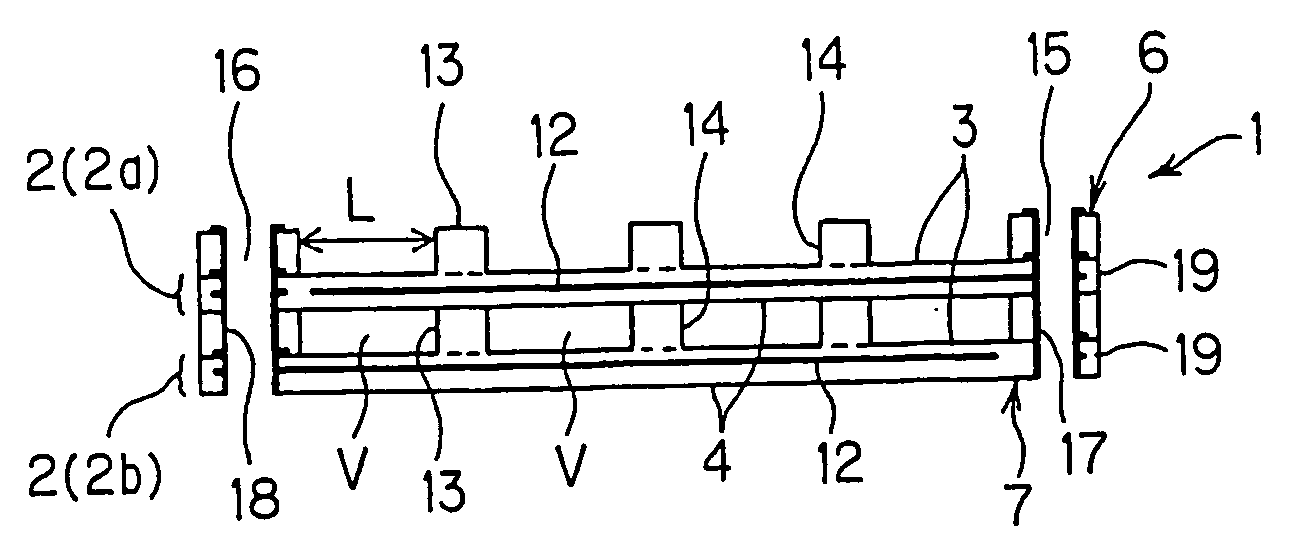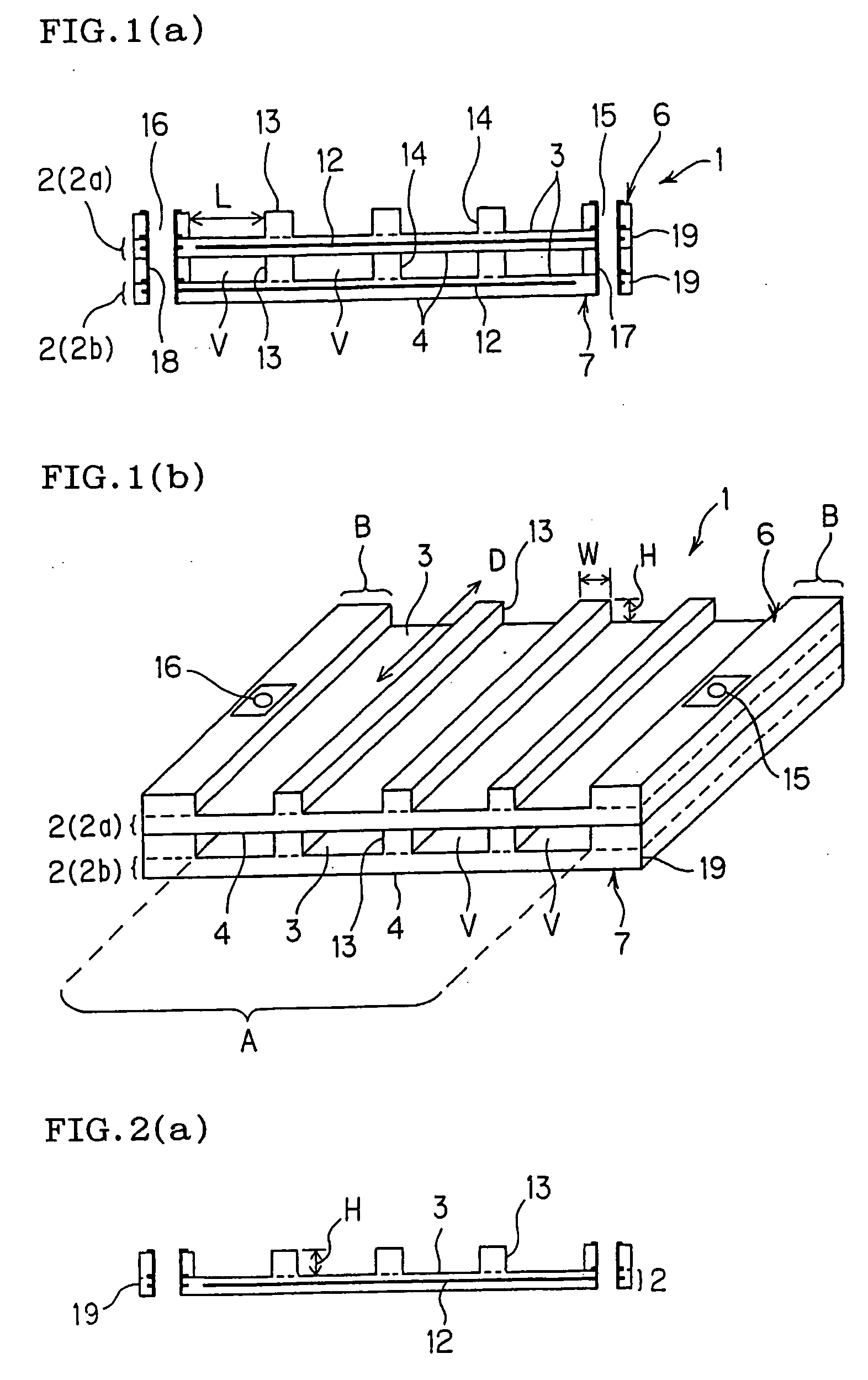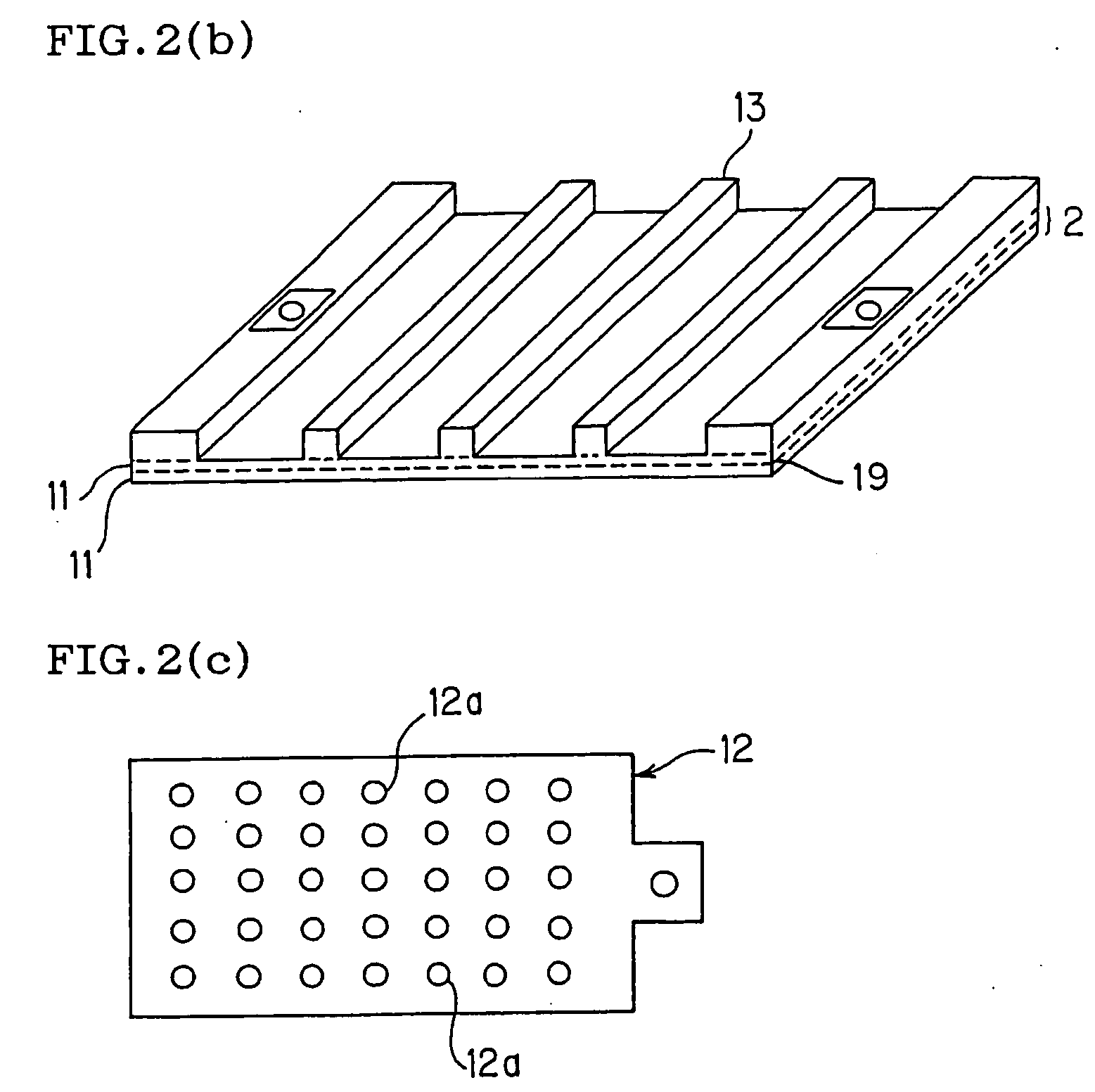Plasma generating electrode and plasma reactor
a technology of plasma generating electrodes and plasma reactors, which is applied in the direction of machines/engines, mechanical equipment, separation processes, etc., can solve the problems of unit electrodes, poor productivity, and increased parts number, and achieve uniform and stable plasma, excellent heat resistance, and reduced distortion
- Summary
- Abstract
- Description
- Claims
- Application Information
AI Technical Summary
Benefits of technology
Problems solved by technology
Method used
Image
Examples
example 1
[0094] A unit in which the unit electrodes 2 (alumina dielectric electrodes) shown in FIG. 3 were layered in six stages (six-stage electrode unit) was produced. The size of the electrode in one stage was 50×100×1 mm, and the internal conductive film (electrode) was printed with a tungsten paste in the area of 40×80 mm to have a thickness of 10 μm. Conductive film through-holes having a diameter of 3 mm and an interval of 5 mm were regularly arranged in the conductive film so that the center of each through-hole was positioned at a vertex of an equilateral triangle. Protrusions having a width of 2 mm and a height of 1 mm were provided at intervals of 18 mm. A protrusion having a width of 8 mm and a height of 1 mm was provided on each end of the electrode, and a conduction through-hole having a diameter of 3 mm was formed at the center. A conductive film was formed in the conduction through-hole by using a tungsten paste and nickel plating on the tungsten paste.
[0095] Ten six-stage e...
example 2
[0102] A sheet having regular protrusions shown in FIG. 8 was produced by extrusion. The flat portion was formed so that the thickness after firing was 0.25 mm. The protrusions regularly arranged on the flat portion were formed so that height after firing was 0.75 mm, the width after firing was 0.5 mm, and the intervals after firing was 5 mm. The protrusions on each end were formed so that the width after firing was 5 mm. The extruded sheet was produced so that the total width after firing was 70 mm. As the raw material, 93% purity alumina was used. After the addition of 5% of methyl cellulose (extrusion agent), a surfactant, and water, the components were kneaded and extruded. The extruded sheet was cut in the longitudinal direction of the protrusion so that the width after firing was 60 mm, and prefired at 1100° C. in the ambient air to obtain a protrusion-disposed ceramic body having a shape shown in FIG. 8.
[0103] A plate-like ceramic body shown in FIG. 9 was obtained by using t...
PUM
| Property | Measurement | Unit |
|---|---|---|
| Thickness | aaaaa | aaaaa |
| Thickness | aaaaa | aaaaa |
| diameter | aaaaa | aaaaa |
Abstract
Description
Claims
Application Information
 Login to View More
Login to View More - R&D
- Intellectual Property
- Life Sciences
- Materials
- Tech Scout
- Unparalleled Data Quality
- Higher Quality Content
- 60% Fewer Hallucinations
Browse by: Latest US Patents, China's latest patents, Technical Efficacy Thesaurus, Application Domain, Technology Topic, Popular Technical Reports.
© 2025 PatSnap. All rights reserved.Legal|Privacy policy|Modern Slavery Act Transparency Statement|Sitemap|About US| Contact US: help@patsnap.com



